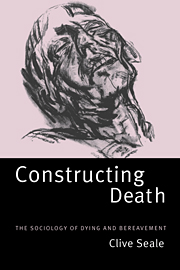1 - Experiencing and representing the body
Published online by Cambridge University Press: 28 October 2009
Summary
Our bodies are the means by which we have life, vehicles for our communal sense of what it is to be human. But they also set material limits to our experience, and ultimately dictate that our lives must end. As humans, we know these things, and this sets us apart from animals, who do not know they will die. So, on the one hand we orient ourselves, through our bodies, towards pleasure, emotions, libido, projects to create personal meaning and, increasingly in the ‘West’, an individually fashioned sense of self-identity. On the other hand, these things are guided, limited and ultimately undermined by the material life of the body, which moves inevitably towards eventual decay and a return to inanimate existence. Those who are left behind know that they too will go this way, but meanwhile must live through their sense of loss, and regenerate the will to live. Life, in a sense, can be understood as a deliberate, continual turning away from death.
Dying, and the sense of loss which death engenders, are episodes where the divide between nature and culture is seen in starkly clear terms. If human social life is an attempt to construct a refuge of meaning and purpose against the meaningless chaos that is nature, then study of the human approach to death and bereavement affords an unusually clear opportunity to perceive some of the most fundamental aspects of these constructions.
- Type
- Chapter
- Information
- Constructing DeathThe Sociology of Dying and Bereavement, pp. 11 - 33Publisher: Cambridge University PressPrint publication year: 1998



